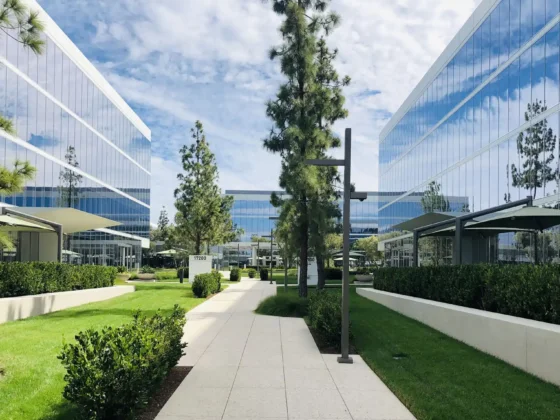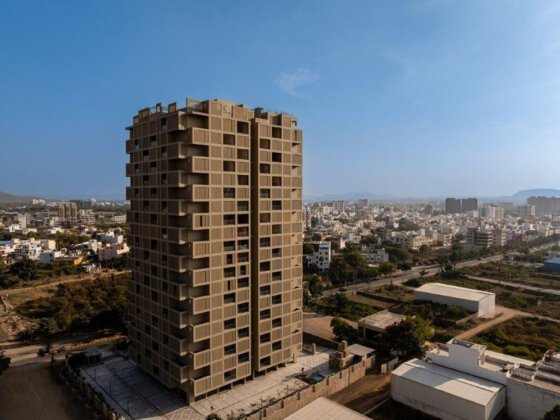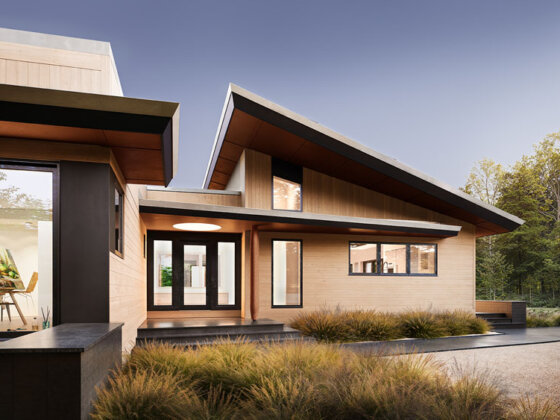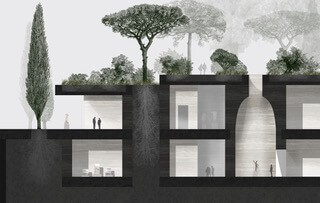Amsterdam, The Netherlands
Electric car manufacturer company NIO has appointed MVRDV for the creation of their new flagship store that consists of the showroom, a café, offices, a playground, and several event spaces.

The architects have used design elements from NIO brand identity combining them with the architectural elements of the existing building, originally erected in 1891 by Jan van Looy.
“The exciting challenge of this project was in unifying the history of this building with the identity of NIO, a company which in many senses is interested in offering a vision of the future,” says MVRDV founding partner Jacob van Rijs.
“In a sense, we are confronting the same challenge that Rietveld resolved so gracefully 90 years ago. NIO House Amsterdam shows how the old and the new can provide a counterpoint for one another and ultimately enrich each other.”
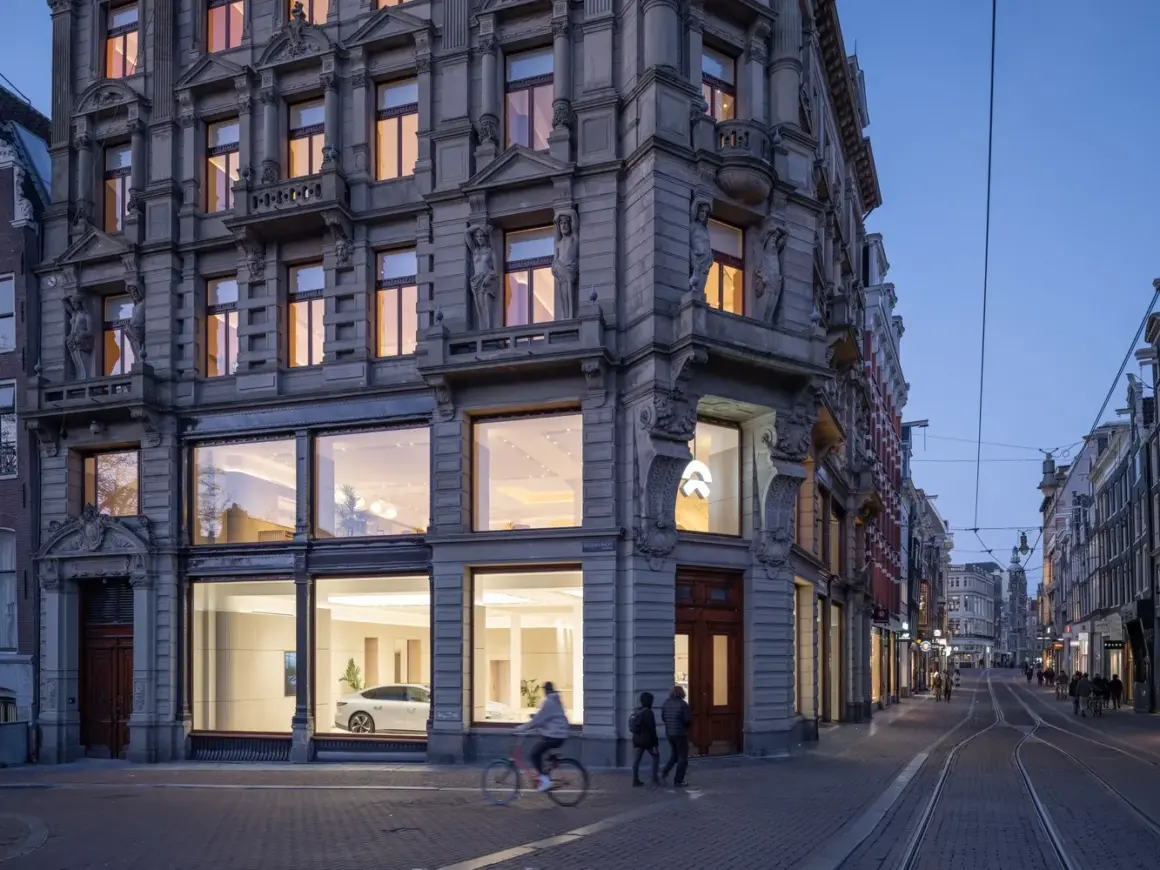
The NIO House Amsterdam is not just a typical “car showroom,” but a public building with a variety of functions that contribute to the neighborhood that hosts it.
Above the car showcase on the ground floor is a café including a soft yellow kids’ corner; next, the second floor is home to the Forum, which local businesses and event organizations can utilize for workshops, presentations, and small-scale lectures, alongside a “Joy Camp” where children can entertain themselves.
The third floor features co-working spaces that can be booked and used by the public, while the fourth is home to an art and design gallery that can equally be used to show NIO products or as a platform for local artists to showcase their work.

Finally – above a fifth floor reserved for NIO’s own offices – are event spaces on the sixth floor and the rooftop pavilion.
MVRDV has renovated the existing staircase revealing its historic details and turns it into a central element of the store as it is always visible from the main spaces on each floor to help orient visitors.
Throughout the project, the space is opened as much as possible to create a light and airy environment, removing internal walls, raising ceilings, and emphasizing vertical connections such as the atrium that links the ground floor with the café.
The design team has devised a palette of materials that becomes progressively cleaner and lighter as it ascends the building, suggesting an atmospheric journey from earth to sky.
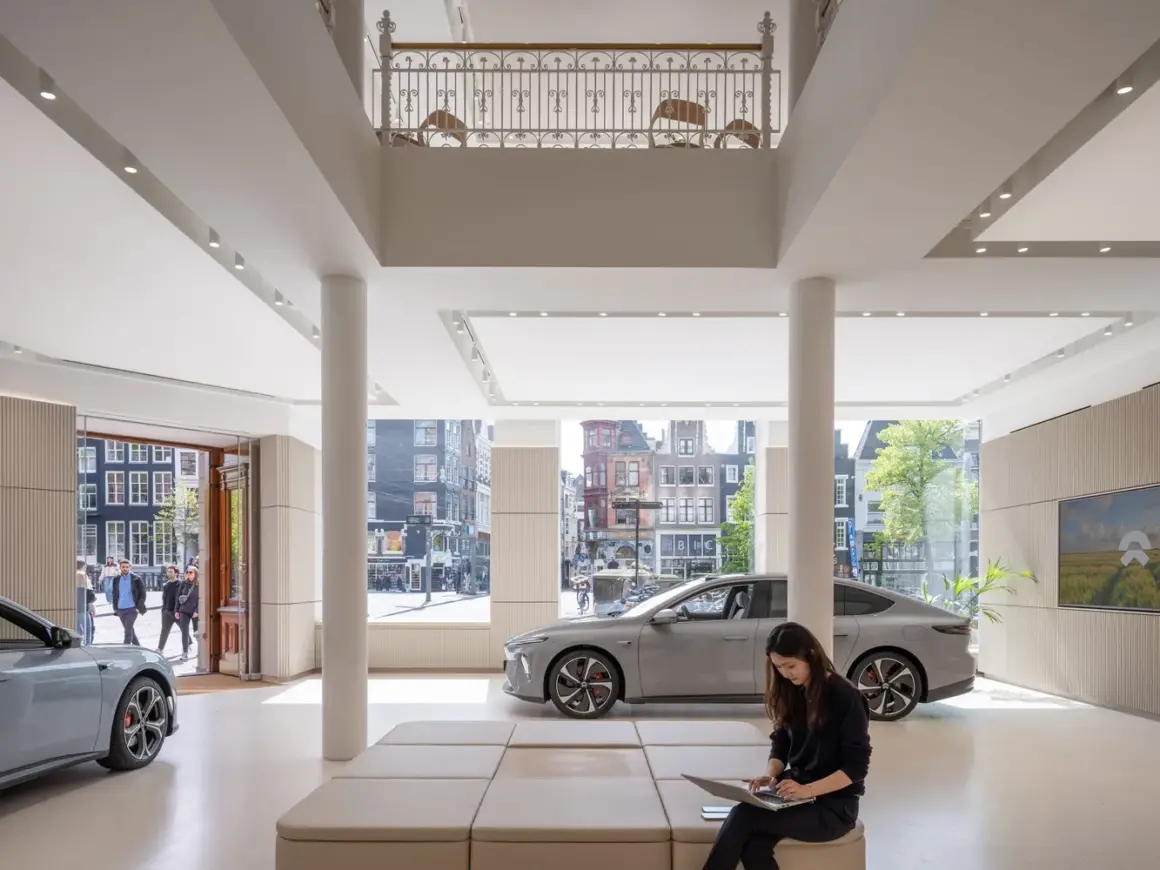
On the ground and first floors, the walls are paneled with a 3D-printed material made from recycled drinks cartons, developed in partnership with Amsterdam-based Aectual, which gives an earthy color and a fluted texture to the walls.
On the level above, the walls and floors are finished with wood, while on the third floor, wood floors are complemented with eco-friendly paint.
The fourth floor features a peachy orange gradient on its walls, which draws attention upwards to the vaulted ceilings of the original building.

This gradual vertical change culminates in the top two floors.
The walls of the sixth transition from gold to blue, leading into the sky-blue floor, finishes, and ceiling of the Rietveld pavilion.
Here, the essence of this piece of modernist history is faithfully preserved, with refined finishes such as the carpet and curtains helping to make it an exquisite space for events such as galas and fashion shows – just as it was almost 100 years ago.
The glass walls of Rietveld’s design give panoramic views over the rooftops of Amsterdam, completing the feeling of expansive lightness and giving space for visitors to reflect on the future.




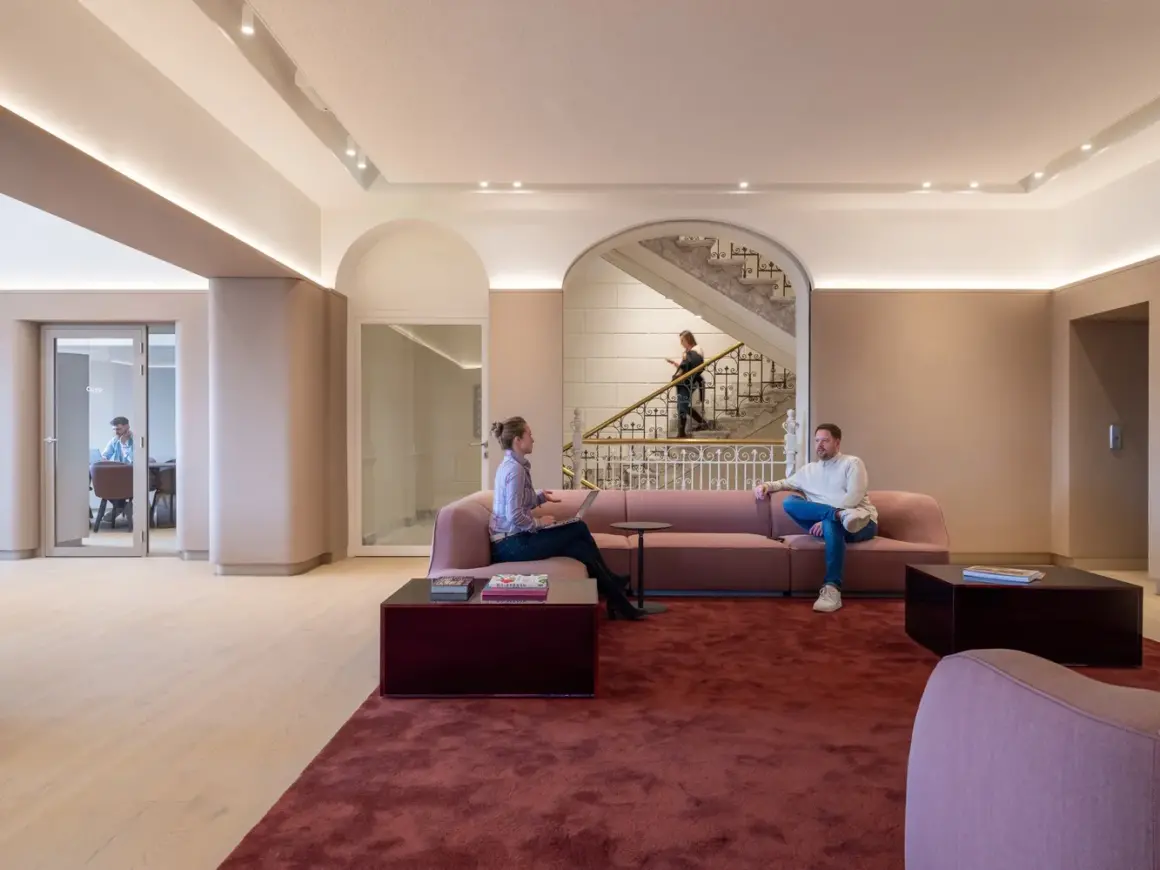



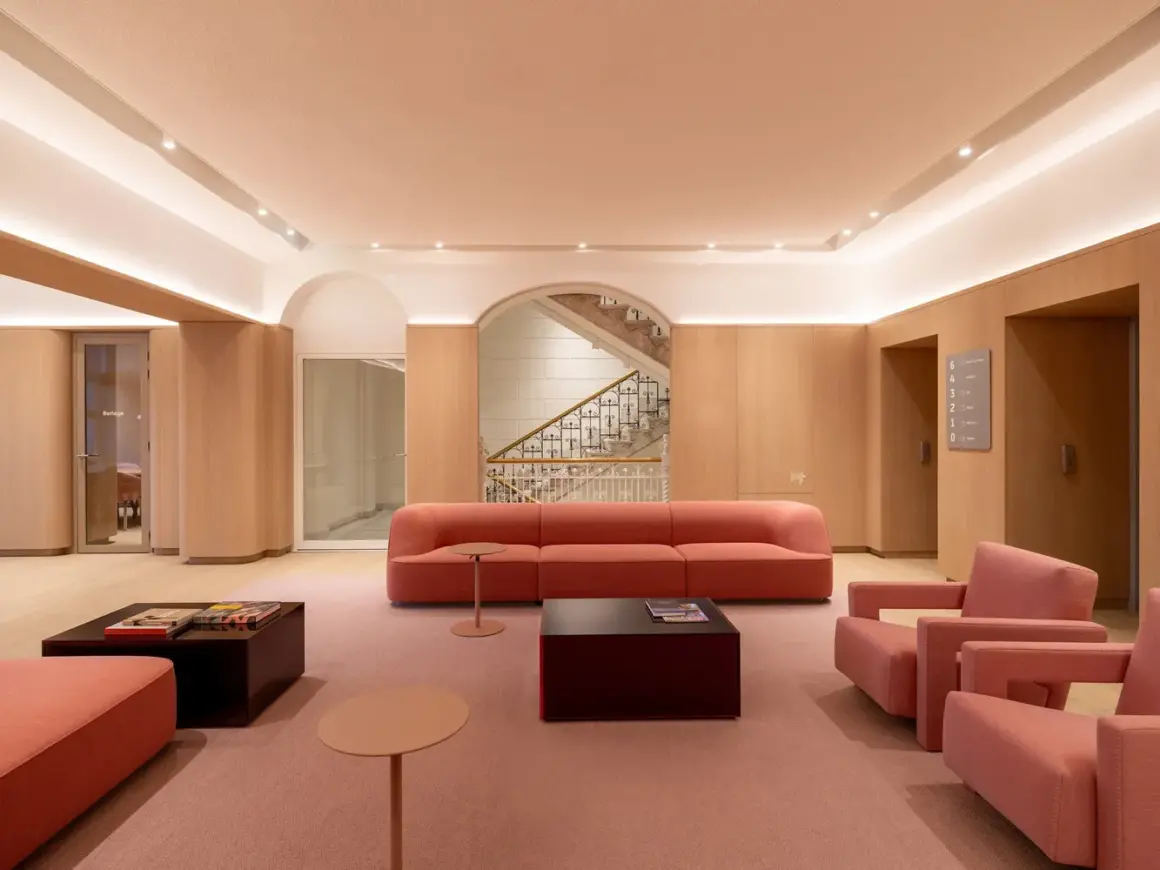


Project: NIO House Amsterdam
Architects: MVRDV
Lead Architect: Jacob van Rijs
Original Architect: Jan van Looy (1891)
Design Team: Aser Giménez Ortega, María López Calleja, Elien Deceuninck, Egle Jacinaviciute, Xiaoyi Qin, Jiameng Li, Martyna Maciacszek, Monica di Salvo, Basak Gunalp, Sanel Beciri, Turker Naci Saylan, Giovanni Nardi, Jeremy de Hoop, Aleksandra Sliwinska, Samuel Delgado, Thiago Maso, and Ela Kara
Client: NIO
Photographers: Ossip van Duivenbode





